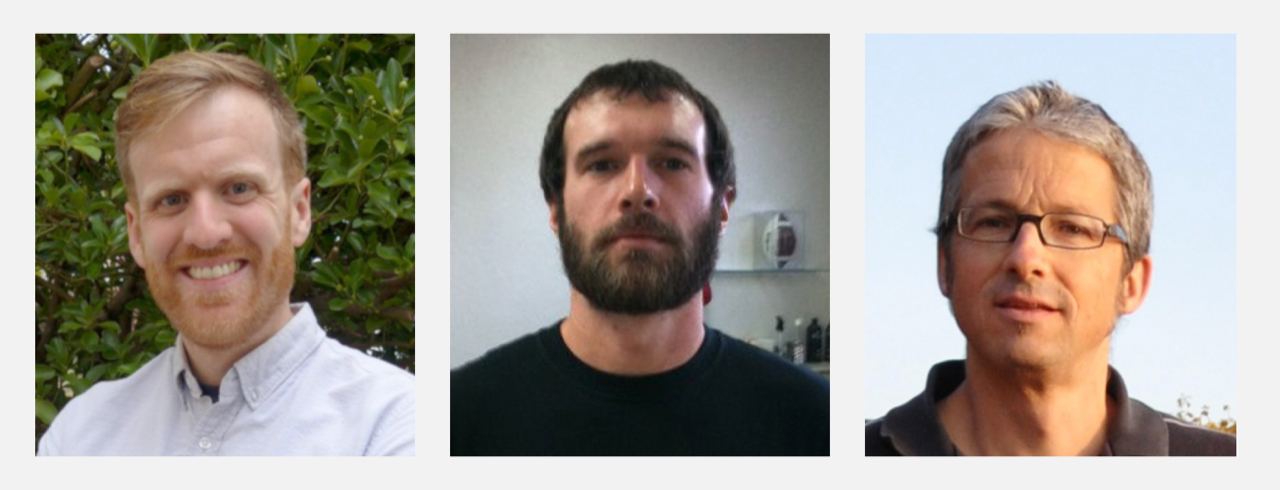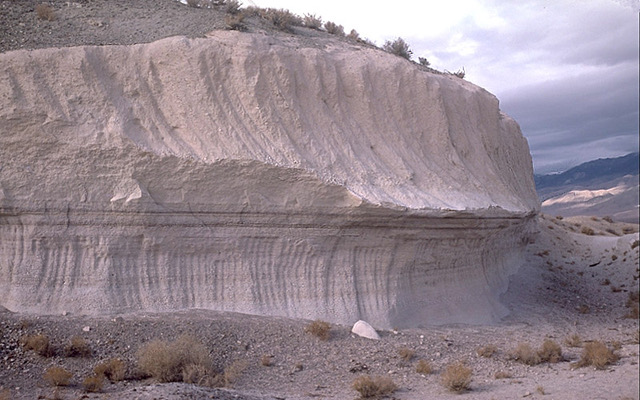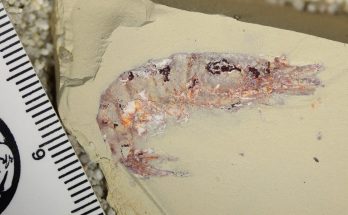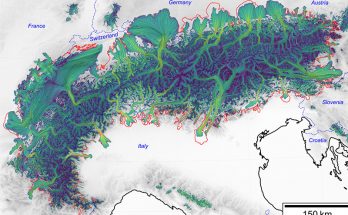Cette publication est également disponible en :
![]() Français
Français

In a recent publication, Michael Jollands, Elias Bloch and Othmar Müntener present new measurements of Titanium diffusion in quartz. Their results differ from previous studies by more than two orders of magnitude. These new findings allow a re-evaluation of the chronology and contributed to the award of the EGU 2021 Prize to its first author.
Rewriting the story of a giant eruption
The impressive Bishop Tuff geological formation in California is the result of a colossal silicic eruption about 800,000 years ago. The resulting flow spreads over 1000 km2 and is 150 m thick.
Understanding big silicic volcanic eruptions, their origin, their potential impact on society and the environment is not easy. And for good reason: such eruptions have rarely been observed in modern times. The deposits of eruptions preserved in the geological record are therefore our best allies in describing the past and predicting the future. The Bishop Tuff is a prime testing ground in this regard.
Michael C. Jollands, Elias Bloch, Othmar Müntener
New Ti-in-quartz diffusivities reconcile natural Ti zoning with time scales and temperatures of upper crustal magma reservoirs
Geology (2020) 48 (7): 654–657
Through the study of quartz, the mineral that typically forms in silicic magmatic systems and fuels these eruptions, geologists attempt to retrace the history of Earth’s dynamics. Quartz contains the records processes from their initial crystallization, their growth, to their final cooling at the Earth’s surface. Quartz has the ability to reveal the thermal, chemical and temporal evolution of magmatic systems.
Calibrating this tool as well as possible is therefore essential. This is why this new study is a fundamental step.
Titanium: slower than expected!
Titanium (Ti) is one of the many trace elements – in minute quantities – that substitute for silicon in quartz. The diffusioncapacity in the mineral, which is strongly dependent on temperature, is thus used by geologists as a geochronometer.
Ti concentration profiles, generally interpreted as resulting partly from crystallization and partly from diffusion, are now commonly analysed to understand a wide range of geological phenomena. This technique has allowed, for instance, to estimate the time required for the formation of porphyry ore deposits (which provide, among others, the “ancient marbles”) and to date metamorphic events. It also makes it possible to determine how long and at what temperatures quartz crystallized before a volcanic eruption, during its stay in the magma of the shallow crust.
Jollands and colleagues’ results are striking: the diffusion of Ti would be two to three times slower than previously reported. These new Ti-in-quartz measurements may seem surprising, but they do reconcile the time scales deduced from Ti diffusion with those determined using radioisotopes and other diffusion timers. By revisiting this technique, the authors have thus helped to establish a theory consistent with all existing studies.
An awarded work that redraws our time scale
This groundbreaking study has been hotly debated (See Comment and Reply) and earned its first author, Michael Jollands, the EGU 2021 Award Outstanding Early Career Scientist of the Geochemistry, Mineralogy, Petrology and Volcanology Division.
Along with other studies by Dr. Jollands, this latter work provides the community with an arsenal of tools to constrain the time scale of geological processes: from mantle convection and melting to magma migration and cooling, through metamorphic reactions and orogenesis. This work has a direct impact on decoding the thermal history of quartz-rich magmas, in particular the pre-eruptive history of major explosive silicic eruptions.
After his stay at ISTE in Othmar Müntener’s team, Michael Jollands is now pursuing his work on the chemistry and physics of crystals and their application to our understanding of time scales at Columbia University (New York), supported by a grant from the Swiss National Science Foundation (SNSF).



